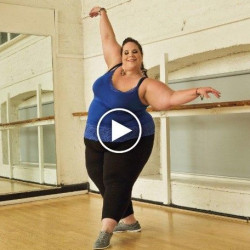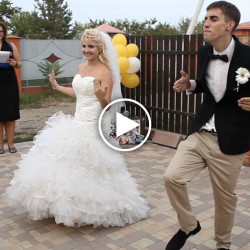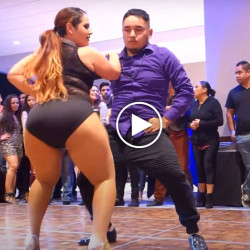Vintage photos show what life looked like in the 1920s
Hulton Archive/Getty Images
- Life in the 1920s was defined by many cultural, political, and economic developments.
- Jazz music and flapper fashion defined the era's sound and look.
- The Harlem Renaissance brought popularity to art created by Black Americans.
The Roaring Twenties — now 100 years ago — looked vastly different than our world today.
Coming after a war-torn decade where military efforts redefined women's role in society, the 1920s saw a period of cultural and social realignment.
The decade brought artistic, cultural, and technological advancements in the form of jazz, new voting rights, radio, and more. But while the decade is best known for its glitz and glamour, there's a darker side to its history, too, that includes many of the same societal issues the world continues to grapple with, like racism, sexism, and wealth disparities.
Take a look at these vintage photos that show society's progress, the simple pleasures we all still enjoy, and where we can look to improve in the next century to come.
Universal History Archive/Universal Images Group via Getty Images
On August 18, 1920, the 19th Amendment was ratified, granting women the right to vote. However, the law largely applied to white women, as Black women, Indigenous women, and other women of color were prohibited from voting for many decades to come.
Bettmann/Contributor/Getty
Here, a photographer captured celebrations after the newly ratified 19th Amendment in August 1920.
PhotoQuest/Getty Images
With the rise in women's liberation movements came a wave of modernist short hairstyles.
Popperfoto via Getty Images/Getty Images
In the Roaring Twenties, fashion was characterized by fringe, loose fabrics, and glamorous details. The garments differed immensely from the athleisure and street style-inspired looks that fill clothing racks today. But as fashion historians explain, trends are cyclical — '20s-inspired clothes could (and will likely) make a comeback into mainstream fashion again.
Universal History Archive/Universal History Archive/Universal Images Group via Getty Images
Prior to the 1920s, women's bathing suits often included stockings and full-length skirts.
With an increase in popularity in water activities, the decade saw a rise in swimwear fashion styles with less fabric, making it more comfortable for wearers to swim.
Gamma-Keystone via Getty Images
Brides Magazine reported that beaded headbands were common additions to wedding gowns during the Jazz Age, as were dresses with high necklines and cape- or flutter-style sleeves.
Gamma-Keystone via Getty Images
The 1920s are often looked at as one of the most influential decades of automobile advancements.
Underwood Archives/Getty Images
The Model T was sold by the Ford Motor Company 1908 until 1927, per History.com. The vehicle was the earliest effort to make a modern car that was affordable to the masses.
As explained by the History Channel, the Model T was so affordable that it helped rural Americans connect to other parts of the country, which eventually led to the creation of the numbered highway system that's known throughout the US today.
Dick Whittington Studio/Corbis via Getty Images
Here, a woman was photographed outside a cab vehicle in Los Angeles, circa 1925.
FPG/Staff/Getty Images
The US Census Bureau reported that the 1920 census marked the first time over 50% of Americans reported living in urban areas compared to rural ones.
Topical Press Agency/Getty Images
Pictured here is a subway entrance in London, circa 1924. Transport for London reported that the city's Underground was the first subway in the world, having opened in 1863.
JHU Sheridan Libraries/Gado/Getty Images
Here, a group of employees stand in front of a train in 1920.
Historica Graphica Collection/Heritage Images/Getty Images
Train travel was arguably its most glamorous from 1910 through 1950.
Kirn Vintage Stock/Corbis via Getty Images
Here, a group of people wait to board a bus in Chicago around 1925.
Underwood Archives/Getty Images
Here, members of a fire department in Pittsburgh, Pennsylvania, were photographed around 1920.
Touring Club Italiano/Marka/Universal Images Group via Getty Images
Here, passengers onboard the Saturnia ship partake in an evening dance in the 1920s. The Saturnia was an Italian liner that sailed until the 1960s. Along with its sister ship, Vulcania, it was among the first large transatlantic liners driven by diesel engines, the Italian Liners Historical Society reported.
Ullstein Bild/Getty Images
Prohibition went into effect in 1920 with the 18th Amendment. Until it was repealed in 1933, the law greatly impacted American culture and society, giving way to organized crime and speakeasies.
Bettmann / Contributor
Here, people drink at a speakeasy around 1920.
Universal History Archive/Universal Images Group via Getty Images
Drugstores weren't just places to grab quick convenience items like they are today; they were central gathering spots in the community. At a 1920s-era pharmacy, customers could sit at the counter and enjoy a root beer float or an egg cream.
These pharmacies of a bygone era were much more ornately decorated — with marble countertops and beautiful light fixtures — than the fluorescent lighting-clad drugstores of today.
Underwood Archives/Getty Images
General stores became less common after the 1920s, but throughout the decade, they were still popular for various goods for farmers and industrial workers, as well as equipment and food.
JHU Sheridan Libraries/Gado/Getty Images
At the time, classrooms and schoolhouses were designed to hold as many students as possible to maximize space.
But in the 1920s, more educators and administrators started to support "progressive" schools that were built to house programs that were new at the time, allowing more open-air, light, and access to outdoor activities, per a 2012 report from the National Institute of Building Sciences about school design.
Edward G. Malindine/Topical Press Agency/Getty Images
Here, the Queen — then known as Princess Elizabeth — was pictured in 1929 at a train station, apparently on the way to the family's Sandringham Estate for Christmas.
Michael Ochs Archives/Stringer/Getty Images
He was born on January 15, 1929, in Atlanta and became one of the most important figures in the Civil Rights Movement during the '50s and '60s.
Bettmann / Contributor
Here, two people photographed around 1926 do the Charleston dance.
NY Daily News Archive via Getty Images
Per the Charleston County Public Library, it became a mainstream dance after the musical's release in 1923 and defined the rest of the decade.
Transcendental Graphics/Getty Images
Jazz music dominated 1920s culture in America thanks to popular musicians like Louis Armstrong.
JP Jazz Archive/Contributor/Redferns
The National Museum of African American History and Culture reported that after the end of the Civil War, the Great Migration brought over 100,000 Black Americans from a wide variety of backgrounds to Harlem, New York City.
Throughout the 1920s and '30s, Black creatives across disciplines shared their art en masse, documenting what it was like to be Black in America during a period known as the Harlem Renaissance.
Iconic works from the likes of Nella Larsen, W.E.B. Du Bois, Zora Neale Hurston, and more were all produced during this era.
Bettmann/Contributor
In the photo above, the waiting room on the right was designated for "Colored" individuals while that on the left was for white people.
Segregation was a prominent aspect of life in the US following the Civil War, especially in the South where Jim Crow laws were harshly enforced.
Bettmann/Contributor
Immigration from Japan to the US was largely limited during the 1920s as a result of the 1907 Gentlemen's Agreement.
However, it had an exception for Japanese wives of current American residents, which led to the practice of American men choosing Japanese women to be their wives solely based on photos.
Many of the Japanese "picture brides" faced discrimination, spousal abuse, and poor living conditions upon arrival to the US, Women & the American Story reported.
Such marriages were made illegal by the 1924 Immigration Act, which barred any immigrant who wouldn't be eligible for citizenship from coming to the US.
People of Asian descent were denied full US citizenship until the 1950s.
Bob Thomas/Popperfoto via Getty Images/Getty Images
After the 1916 Olympic Games were canceled due to World War I, the 1920 summer Olympics were set in Antwerp, Belgium, as a way to honor "the suffering that had been inflicted on the Belgian people during the war," the Olympics reported.
It was also the first year the Olympic Rings symbol was publicly displayed.
General Photographic Agency/Hulton Archive/Getty Images
Here, people carry newly manufactured tennis balls.
Underwood Archives/Getty Images
Pictured here, a football team poses in sporting uniforms at Oliver High School in Kentucky in 1921.
Time Life Pictures/Mansell/The LIFE Picture Collection via Getty Images
This looks way more sophisticated than a sweaty game of kickball.
Topical Press Agency/Getty Images
Here, people attend a horse race at Ascot Racecourse in Ascot, England, around 1920.
Central Press/Getty Images
Carnivals and state and county fairs in the US were popular summertime activities during the early 20th century.
Kirn Vintage Stock/Corbis via Getty Images
USA Today reported that Coney Island's Luna Park is believed to have had one of the first bumper car attractions.
Irving Browning/The New York Historical Society/Getty Images
Coney Island was an iconic part of the early 20th century that transformed how Americans spent their free time.
Bettmann / Contributor
The Brooklyn park gave locals and visitors new ways to stay entertained and spend time with one another in the form of roller coasters and rides, animal exhibits, and a lively boardwalk and beach.
Bettmann / Contributor
Miss Coney Island 1924 and 1925, respectively, appeared to stand on the Coney Island boardwalk sometime during the mid-1920s.
H. Armstrong Roberts/Retrofile/Getty Images
This snapshot from around 1920 shows fair attendees having their picture taken.
The Montifraulo Collection/Getty Images
Around 1920, a family was photographed at a beach in Germany holding up shrimping nets.
ullstein bild/ullstein bild via Getty Images
The National Endowment for the Humanities reported that the silent film era began in 1894 and continued through the 1920s. Before there were "talkies," audiences were dazzled by films starring actors like Charlie Chaplin and Clara Bow.
John Springer Collection/CORBIS/Corbis via Getty Images
In 1927, "The Jazz Singer" became the first feature-length movie to feature dialogue scenes, marking a transition from the silent film era, per the Museum of Modern Art.
The World reported that the first film (that wasn't a feature-length movie) with talking scenes was actually created in 1898 by Alice Guy-Blaché.
Hulton Archive/Getty Images
Musical movies produced in the late 1920s, like "Broadway Melody," continued to push "talkies" into the mainstream.
adoc-photos/Corbis via Getty Images
The Dolly Sisters, pictured here, were famous vaudeville performers in the early 20th century.
Another iconic vaudeville production during the 1920s was the Ziegfeld Follies, PBS reported, which preceded the modern Broadway musical and helped launch the career of many theatrical stars of the time.
Bettmann / Contributor
MGM's first lion named Leo was shown on screen in 1927, per The Hollywood Reporter.
ullstein bild/ullstein bild via Getty Images
In the almost 100 years since this photo was taken, some states in the US have banned the use of animals in circuses, while others have enacted partial bans.
The famous Ringling Bros. and Barnum & Bailey circus show, "The Greatest Show on Earth," shut down in May 2017 after 146 years of shocking the nation with its acrobatic and animal performances. It reopened five years later, but without animals.
Bettmann / Contributor
Here, women are photographed holding pigs outside of a circus in New York around 1920.
Library of Congress/Corbis/VCG via Getty Images
Willis Carrier invented the first air conditioner in 1902, but it wasn't until 1929 that Frigidaire introduced a unit that was suitable for use in homes, the US Department of Energy reported.
Bettmann/Contributor
People relied on newspapers for local, national, and global updates, as well as advice columns, entertainment, and other stories.
Bettmann/Contributor/Getty Images
The Pennsylvania Center for the Book reported that Pittsburgh radio station KDKA produced the world's first radio broadcast on November 2, 1920.
Frank Conrad is known as the "father of radio broadcasting" for inventing the first station, which was located in his garage.
Library of Congress/Corbis/VCG via Getty Images
Per MIT Black History, Rufus P. Turner was the first Black radio station operator. He began operating his station, W3LF, in Washington, DC, in 1928.
Keystone-France/Gamma-Keystone via Getty Images
Phones of the 1920s and '30s were characterized by their rotary dials and "spit cup" receivers.
GraphicaArtis/Getty Images
Being a switchboard operator often required saying the phrase "number please" hundreds of times per hour for eight hours a day, according to a 1922 op-ed in The New York Times, as cited by Time.
FPG/Getty Images
The beginning of the 20th century brought many advancements to the home — from gas ranges to the advent of refrigerators, which became commonplace in homes by the 1920s — but kitchens certainly didn't have the multi-functional, high-tech gadgets many homes are equipped with today.
Harlingue/Roger Viollet via Getty Images
Here, kids were photographed at a soda stand on a street in Paris around 1920.
The only thing that would make this sweeter was if Coca Cola still cost a nickel.
Branger/Roger Viollet via Getty Images
Here's to all the changes and all the lasting pleasures of the next 100 years.










